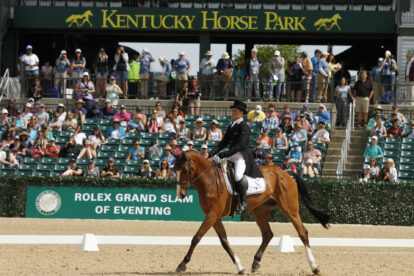The Olympics showcases the best of sports, inviting only the best athletes around the globe to battle it out in a show of unity and friendly competition that brings everyone together. Equestrian events have been a part of the Olympics for a long time, although still being relatively new when you consider the original sports that featured in the first games.
The natural question that follows is what are the oldest equestrian events at the Summer Paris Olympics, and when did they first start? Below, we review when each equestrian event was added.
Full Card Plays Available Now
There’s a reason we’re the #1 trusted source for premium racing picks & info.
Show jumping
Equestrian events in the Olympics first made their debut in 1900, featuring a primitive version of the show jumping we know today as well as a long-forgotten high-jumping segment that failed to make the cut in later Olympics. This was an experimental debut to see whether equestrian events were a good fit, and the answer was a resounding yes.
Equestrian events perfectly fit the atmosphere of the Olympics, showcasing glamor, sophistication and showmanship. It was also quite different from most other sports in the competition, pleasing fans and becoming one of the biggest equestrian events in the world.
Show jumping as we know it today was first featured in the 1912 Olympics, alongside both the other events we are going to discuss today. In this event, riders and horses must make their way over several obstacles in a race to beat the clock.
Show jumping has always been one of the most popular events at the Olympics since its introduction, and this tradition has continued to the present day.
Dressage
Dressage is another equestrian sport that was introduced in 1912. Unlike show jumping, dressage features no obstacles. Dressage is more akin to a dance or a show of sophistication rather than overall sporting prowess. In dressage, riders and horses perform a series of tests from memory.
This can range from walking to trotting to more complex maneuvers like piaffe and passage. Participants are scored on precision, fluency and smoothness. It’s often called “horse ballet” because of its delicate nature and elegance.
Dressage isn’t as popular as show jumping due to its slower nature. It’s more for people involved in the community or for people who love horses. For others, it can seem a little strange or uninspired.
This doesn’t mean there isn’t a huge fan base for dressage. There are plenty of betting opportunities, and there is no better event for fans who want to get a closer look at the majestic beauty of horses and watch in awe.
Eventing
Eventing is the penultimate equestrian event at the Olympics, combining several different sports into one to see which rider and horse are the best overall. It was also introduced in 1912, alongside dressage and show jumping.
Eventing is a combination of dressage, cross-country and show jumping. Dressage tests the horse’s obedience and the rider’s skill. The cross-country section involves navigating a long outdoor course featuring obstacles that are both man-made and naturally occurring, testing speed and endurance. Lastly, show jumping showcases agility and athletic prowess.
This series of events takes days to finish and can be quite grueling both for the riders and horses. The inspiration for eventing came from military cavalry training, where horses needed to be able to excel in multiple areas.
Due to its adaptability and challenge, eventing is one of the most popular events at the Olympics. It draws in crowds from both equestrian communities as well as sports fans.
It also usually features prominent horses and riders that are well-known. Many of the horses and riders that excel in eventing also perform well in the top horse races, bringing an extra element of prestige to the competition.
Evolving traditions
While these three events have been hallmarks in the Olympics for over a century, there have been numerous changes that have affected how each of them operates. For instance, originally, it was only military officers who were allowed to participate in equestrian events. This was changed after WW2, opening the events to civilians.
The inclusion of women has also been a significant evolution. Women were permitted to compete in equestrian events alongside men in 1952, making it one of the only events where men and women can compete on equal terms.
Conclusion
Well, there you have it — you now know what the oldest equestrian events at the Summer Paris Olympics are. Being introduced to the grand stage in 1912, show jumping, dressage and eventing became hallmark events that have been able to stand the test of time. Equestrian events are now some of the most highly anticipated events at every Olympics, with fans admiring the majestic nature of the horses as well as the skill of the dedicated riders.
While there may be slight changes to each of these events down the line, equestrian events will likely always have a place in the Olympics. They are a natural fit for such a grand competition, and the fact that show jumping is one of the most-viewed events speaks volumes.


